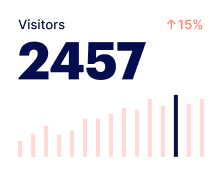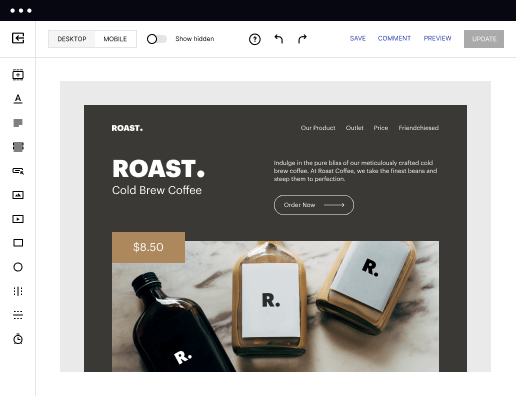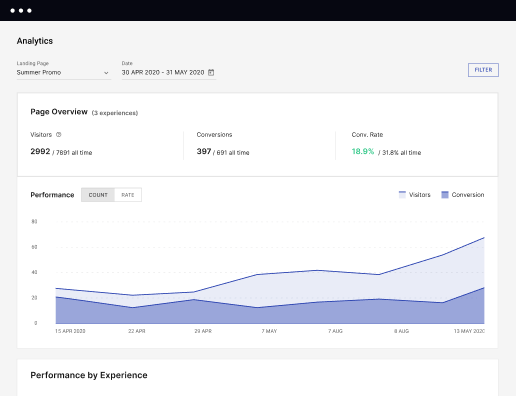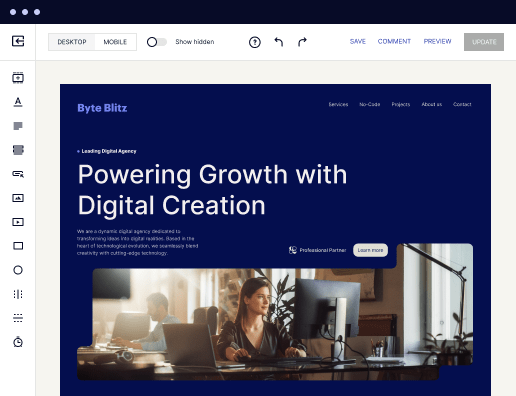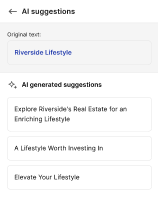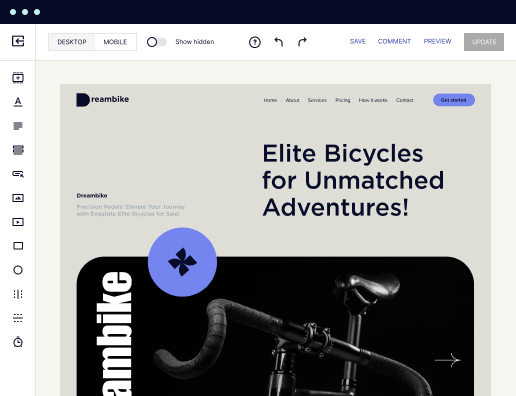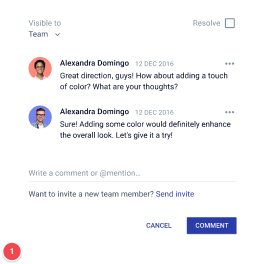Make an impressive reporting page instantly
Create your reporting page and effortlessly optimize your web pages for diverse ads and audiences. Transform visitors into leads and sales while bolstering brand trust and nurturing customer loyalty.
On page reports: Your ultimate how-to guide
Creating your reporting page is an essential step for any marketer aiming to track performance and optimize conversions. Instapage offers a seamless platform that empowers users to build comprehensive landing pages equipped with tracking features, helping businesses enhance their marketing strategies. With over 100 conversion-focused layouts and flexible customization options, you can efficiently create a reporting page tailored to your specific goals.
Understanding the purpose of your reporting page
To effectively create your reporting page, it’s crucial to define its purpose. A reporting page serves as a central hub where key metrics, conversion rates, and audience insights are gathered. Clarifying the purpose can help in selecting the right elements to display, ensuring that your target audience, including marketers and advertisers in sectors like tech, education, and financial services, learns actionable insights from the data presented.
Step 1: Choose the right layout
The first step in creating your reporting page involves selecting an appropriate layout. Instapage provides various templates that are optimized for conversion. Consider these options:
- Conversion-centered designs: These layouts focus on guiding visitors toward desired actions, making it easier to highlight key reports.
- Data visualizations: Use templates that incorporate charts and graphs, allowing for a visually engaging overview of your metrics.
- Mobile responsiveness: Ensure the selected layout is mobile-friendly to reach a broader audience, accommodating users on various devices.
Step 2: Integrate essential metrics
Once you have your layout, it's time to integrate the metrics that matter most to your business. Here’s how to proceed:
- Conversion rates: Track the percentage of visitors who complete desired actions to gauge landing page effectiveness.
- Audience demographics: Using Instapage’s data tools, customize your reporting page to display metrics that reflect the audience segmentation.
- Traffic sources: Include information showing where your audience comes from, helping optimize future marketing efforts.
Step 3: Implement tracking and optimization tools
Lastly, implementing tracking and optimization features is vital for an effective reporting page. Utilize tools such as:
- Heatmaps: Analyze visitor behavior on your reporting page to highlight which sections are performing well.
- A/B testing: Conduct experiments with different elements on the reporting page to find the best-performing configurations.
- Analytics dashboards: Regularly monitor page performance to make informed decisions based on real-time data.
In conclusion, creating an impactful reporting page using Instapage involves a detailed understanding of your purpose, careful selection of layout, integration of essential metrics, and implementation of optimization tools. Executing these steps will improve your marketing strategy and ultimately boost conversions.
Start creating your reporting page today with Instapage and watch your marketing efficiencies soar. Leverage our platform's robust features to deliver insights that matter!
Get more out of Create your reporting page
Improve your Quality Score with quick load technology for landing pages
Increase conversions with content that aligns with your ads and audiences
Achieve maximum ROI by scaling your marketing initiatives
Leading the way in building high-performing landing pages





Frequently asked questions about reporting page
See how to create your reporting page in action
Ready to skyrocket conversions?
Supercharge your ad campaigns with high-performing landing pages.
Get started
